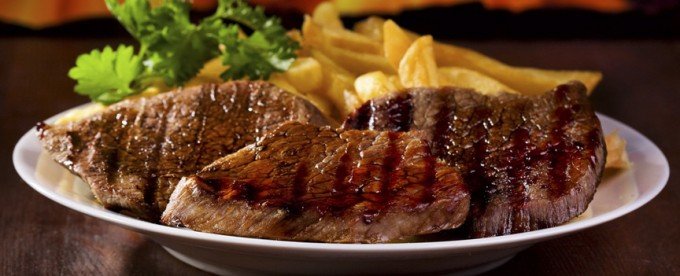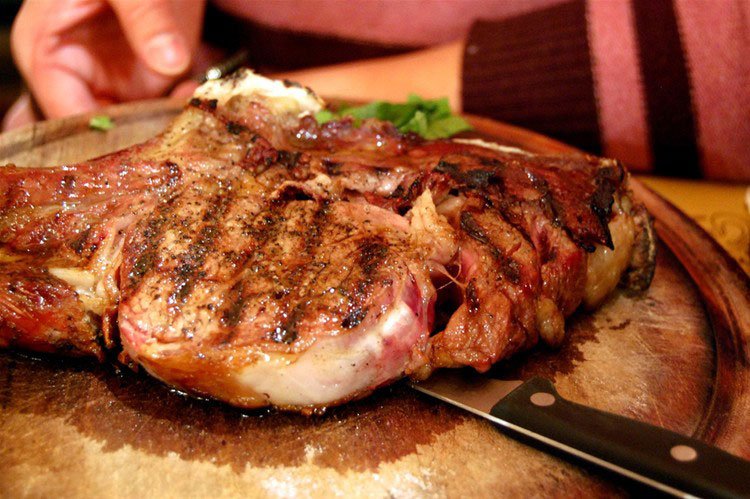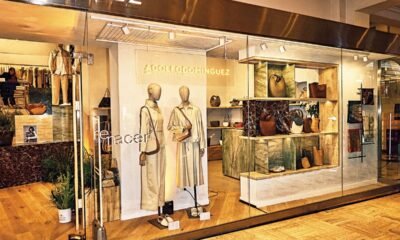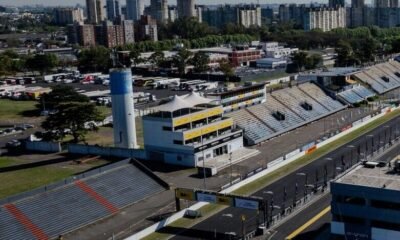Ingles
All about Beef
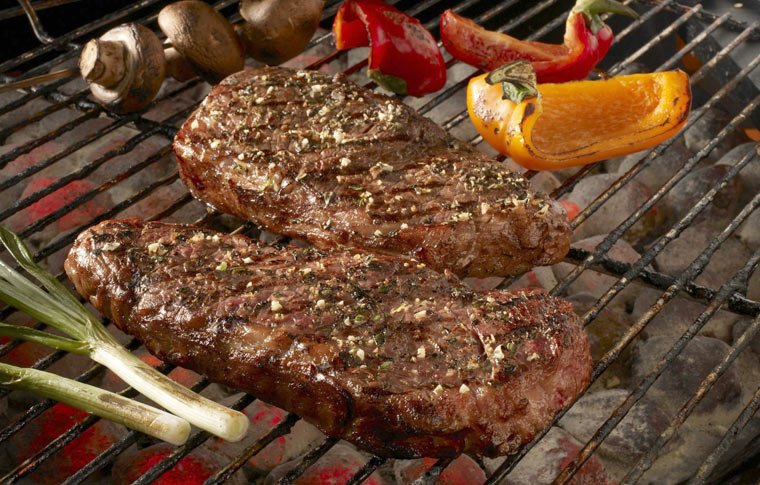

All you need to know about Argentine beef and beef cuts, by local journalist Raquel Rosemberg. The article originally appeared in The World’s 50 Best Restaurants Blog. Original photos have been removed.
And as if Raquel’s article isn’t enough for you, we’ve added our own section further below on what to ask for to make sure you get your meat just as you like it.
Buenos Aires cuisine: an A-Z of Argentine beef
The identity of Argentines, and in particular porteños – the residents of Buenos Aires – is inextricably intertwined with meat, and more specifically with the ritual of the barbecue or parrilla, which knows no social divides. In the second of our five-part series about Buenos Aires gastronomy, we look at the typical cuts.
Buenos Aires’ average annual beef consumption per capita is estimated at 60kg, although some would say it’s more like 90kg – it’s eaten day and night. But in the country of cows, nobody ever asks about the origin of their meat.
The best beef production comes from an extensive system of grazing areas with fertile soil, where the animals can move around freely. The system differs massively from feedlot or factory farming, and produces a tenderer, juicier, tastier meat with a bright red colour. It also produces beef that is 100% natural, without additives or hormones, and also low in saturated fatty acids and cholesterol.
Argentine beef should be a vivid, bright red colour and moist and firm to the touch. It has a bulky, closed muscle mass with little fat covering and is marbled with fat, which gives it its characteristic flavour. The best cuts are from Hereford or Aberdeen Angus cows, but there are also differences according to age, sex and live weight. The range includes calves (8-10 months), heifers (female, 15-18 months), young steers (male, 16-20 months), bulls (male, 20-24 months), heavy bulls (24-36 months) and female cows (36-60 months).

A guide to typical beef cuts
Asado de tira – short ribs or chuck ribs. Cut it cross-ways, 2cm from the bone, for the famous ‘banderita’ style
Asado americano – from narrow-cut steaks (cut through the longest bone) into strips one-inch thick
Bife ancho – boneless prime rib steaks
Bife angosto – strip-loin steaks. This one is easy to spot because it looks like a map of Argentina. Deboned, it becomes bife de chorizo (also strip-loin steaks, cut from the front of the muscle)
Bife de chorizo, corte mariposa – butterfly-cut steak
Bife con lomo – strip-loin steak where one end has a T-bone
Bola de lomo – the part that covers the femur alongside the belly. Most often used for breadcrumbed milanesas
Colita de cuadril – tri-tip. Taken from the tail, this contains lean meat with a tasty flavour and a firm consistency
Cuadrada – outside round steak. Also used in milanesas and other uses
Cuadril – rump. Removed from the hindquarters, it’s like a huge ball of meat with a tail
Entraña – skirt steak. Tasty and tender
Lomo – tenderloin. Famous for its tenderness, flavour and low fat content
Marucha – 7-bone roast or cross-cut section of chuck blade. Similar consistency to rib cap, it has a lower fat content and even though it’s not as tender, its special flavour makes it very much sought-after
Matambre – the layer of meat that covers the rib section. Filled matambre is a typical Argentine dish
Minibeef or baby beef – a larger version of bife de chorizo (strip-loin)
Nalga – round. Voluminous, boneless and lean. Its size allows for large slices to be cut for milanesas
Ojo de bife – the centre of boneless prime rib steaks. Tasty, tender and delicious
Peceto – eye of round. Low in fat, it’s the opposite end to the bola de lomo. It’s uniform, compacted and lean
Picanha – rump cap, which uses its Brazilian Portuguese name
Tapa de asado – fine cut of meat, more consistent and tasty than it is tender
Vacío – flank steak, from the junction of the rib and the hind leg
Offal and sausages
Criadillas – bull’s testicles
Chorizo fresco – fresh sausage prepared with pork, beef, lamb or a mixture, with added bacon. These must always be thoroughly cooked
Salchichas parrilleras – sausages that must be at least 80% pork and the rest beef, or they can be 100% pork
Morcilla – cooked sausage, made from blood taken during slaughter. It is then thoroughly washed, defibrinated and filtered, and added to bacon or pork, chopped pigskin, salt and spices
Mollejas – sweetbreads
Chinchulines – the small intensines of the cow
Riñones – cow’s or pig’s kidneys
The parrilla – a ritual
For Argentines, the art of lighting the barbecue is passed down from father to son. It’s usually a man’s job and is carried in the genes. Every Argentine should be able to debate techniques, cuts and cooking levels. For that reason, asking a porteño to explain how to do a barbecue is nigh-on impossible. The parrilla is at the centre of every party or family gathering, and every neighbourhood has a barbecue restaurant for those who can’t perform the ritual at home.
Preparing the parrilla
The first thing to know is that in Argentina, barbecues are always done with charcoal or hardwood firewood. The fire must be started with paper and wood chips (branches or whatever you have to hand), and never fuel. Slowly add wood to the flames, leaving gaps so the air can filter in and stoke the fire. As the flames pick up, you can add coal or firewood. It’s important to have a very hot surface to cook on, and it should stay hot for as long as you’re cooking. For all except the greediest guest, allow 500 grams per person, including sausages, black pudding, sweetbreads and small intestines, adding other bits and pieces as you go along. Serve it up with salad or potatoes (baked or fried) and chimichurri sauce, separately to avoid polluting the flavour of the meat.
Chimichurri sauce
Argentina has as many recipes for its famous condiment as it does grills. The sauce is a delicious mix of herbs and spices such as parsley, oregano, red pepper, garlic, salt, wine vinegar, pepper and oil. There are various versions about its origin, including one about an Englishman named Jimmy Curry, who wanted to export beef to the UK. His hosts welcomed him the Argentine way: with a barbecue, to which he added a sauce. It went down so well that it’s been made ever since, and its name went from Jimmy Curry to chimichurri.
The writer and journalist Miguel Brascó had another version: that chimichurri came at the start of the 19thcentury from Patagonia via the Brits, who wanted some sauce to add to their lamb, and used the phrase ‘give me the curry’. Finally, a third explanation puts it down to Basque, where ‘Tximitxurri’ means ‘jumble’ or ‘mixture.’ Whatever its origin, chimichurri remains a staple condiment for every Buenos Aires barbecue.
Now see what chefs Fernando Trocca, Dante Liporace and Gonzalo Aramburu have to say about Argentina’s biggest staple food.
Source: buenosaires.gob.ar

-

 Turismohace 11 años
Turismohace 11 añosArquitectura: la asombrosa mezcla de estilos de Buenos Aires
-

 Ahorahace 8 años
Ahorahace 8 añosLa historia del Cabildo, un monumento mutilado
-
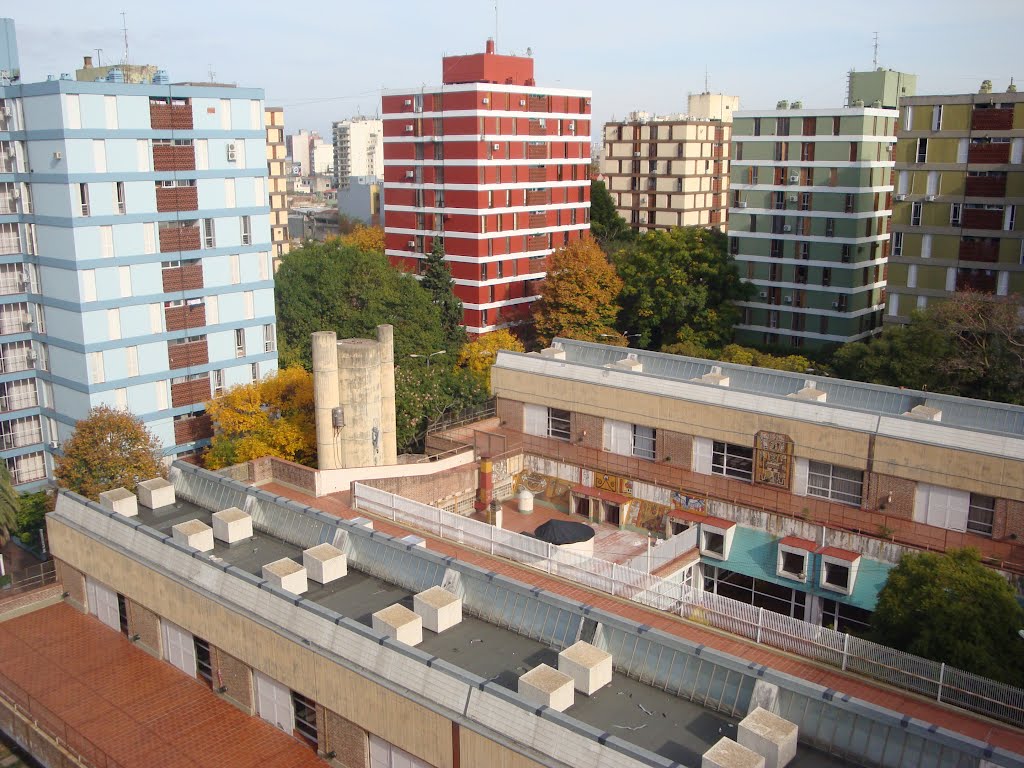
 Circuitoshace 11 años
Circuitoshace 11 añosCatalinas Sur, un encantador barrio de La Boca
-

 Circuitoshace 10 años
Circuitoshace 10 añosDe barrio obrero a joya de Barracas: la historia del elegante Monseñor Espinosa
-

 Turismohace 11 años
Turismohace 11 añosLa historia del lujoso Edificio Estrugamou de Buenos Aires
-

 Saludablehace 11 años
Saludablehace 11 añosConocé la planta que regenera el hígado
-

 Turismohace 8 años
Turismohace 8 añosLa imperdible colección de esculturas del Jardín Botánico
-

 Circuitoshace 11 años
Circuitoshace 11 añosBarrio Rawson, un secreto en Buenos Aires
